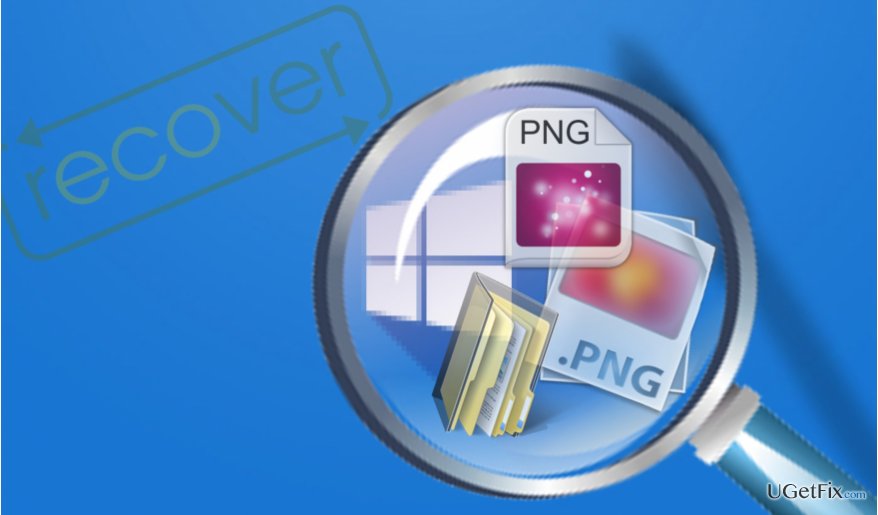Question
Issue: How to Restore Files Deleted by Windows Updates?
Did someone experience the file loss after the installation of today’s update (KB4022716) or earlier updates? Actually, when the update has been installed, all files that I used to store in the pictures and documents folders under This PC have been removed. Or maybe their location has been changed but I can’t find any of the needed files anywhere. I desperately need help!
Solved Answer
Microsoft spokesmen assert that none of the Windows Updates, including Anniversary Update, Creators Update, and monthly updates, will affect (move, delete, or change) personal files stored on the system. Microsoft’s Anniversary Update disproved such claims because few Windows 10 users experienced the file loss after the installation of the update because it deleted the Linux partition. It seems that the story reiterates. After the release of the Windows 10 Cumulative Update KB4025342 (OS Build 15063.483), people infested the official Microsoft’s website with the question asking why all the files stored on the Pictures and Documents folders under This PC have been removed.
Such accusations are very serious because actually Microsoft has no rights over the personal information and files that are stored on the system. However, we would like to calm people down because it seems that the KB4025342 update did not removed the files, but rather changed their location from This PC/Documents or This PC/Pictures to Users/UserName/Documents and Users/UserName/Pictures. Unfortunately, the exact reason is not clear yet, but some experts assume that these files might have been damaged or corrupt.

If you are facing this problem, navigate to the Users/UserName/ and the folder that contains the needed files, cut them all, and paste to the preferred location. However, some people reported that the files are either not there or cannot be transferred as the following error message occurs:
Location is not available
C:/User/UserName/Documents/Pictures/FolderName/ is not accessible.
Access is denied
If it seems that you lost access to your personal files after the installation of the KB4025342 or another Windows update, there are several things that can help you to restore them.
Restoring files that were removed by Windows Update
Method 1. Check the Recycle Bin and File Explorer
Of some of the files have been lost after the installation of the latest Windows update, we would strongly recommend checking the Recycle Bin to make sure that you or another person did not remove the files accidentally. If the needed files are not stored in the Recycle Bin, then open File Explorer and search for the files on it.
Method 2. Use File History
If you have had enabled the File History back up settings some time ago, you can use File History backups to restore the deleted files quite easily. For this purpose, you should:
- Open Windows search and type File History.
- Select Restore your files with File History option.
- If you know the names of the lost files, you can type them in the search. If you don’t remember the precise names, you can browse for them through different versions of the folders and files.
- Select the files that you want to restore and select the Restore button. This option will restore the files to their original locations.
- If you want to save them to the different location, right-click on the Restore button and select Restore To.
- Finally, select the new location and wait for the files to be restored.
Method 3. Restore to an earlier point.
If previous methods did not help, we would recommend you to go back to the point before the update was installed. For this purpose, perform these steps:
- Press Windows key + I and select Update & Security.
- Click Recovery on the left pane and select Restart now under Advanced startup.
- In the Advanced startup screen, select Troubleshoot.
- Select Advanced options and then System Restore.
Recover files and other system components automatically
To recover your files and other system components, you can use free guides by ugetfix.com experts. However, if you feel that you are not experienced enough to implement the whole recovery process yourself, we recommend using recovery solutions listed below. We have tested each of these programs and their effectiveness for you, so all you need to do is to let these tools do all the work.
Access geo-restricted video content with a VPN
Private Internet Access is a VPN that can prevent your Internet Service Provider, the government, and third-parties from tracking your online and allow you to stay completely anonymous. The software provides dedicated servers for torrenting and streaming, ensuring optimal performance and not slowing you down. You can also bypass geo-restrictions and view such services as Netflix, BBC, Disney+, and other popular streaming services without limitations, regardless of where you are.
Don’t pay ransomware authors – use alternative data recovery options
Malware attacks, particularly ransomware, are by far the biggest danger to your pictures, videos, work, or school files. Since cybercriminals use a robust encryption algorithm to lock data, it can no longer be used until a ransom in bitcoin is paid. Instead of paying hackers, you should first try to use alternative recovery methods that could help you to retrieve at least some portion of the lost data. Otherwise, you could also lose your money, along with the files. One of the best tools that could restore at least some of the encrypted files – Data Recovery Pro.



